The flavors of American Southwestern cooking are as unique and varied as the landscape itself. Imbued with native, earthy ingredients, cosmopolitan Spanish savor and the distinctive heat from south of the border, this rustic cuisine is an iconic symbol of the cultures and geography from which it is derived.

Simple yet diverse, it’s a distinctive compilation of foods that would have been eaten by Native American Indians, with additional contributions from the Aztec and other peoples of Mesoamerica, Spanish colonial settlers, cowboys and Western settlers.
Back to the Beginning
For millennia, Native Americans established the basis for this remarkable cuisine with flavorful dishes gleaned from the desert and mountains. With very little rainfall, the landscape looks harsh and arid, yet it offers a surprisingly abundant variety of vegetation in wild edibles.

Some of the common food sources used by the Yavapai, Apache, Hopi and Navajo peoples were (and are):
- Roasted agave heart.
- Arizona walnuts.
- Berries of the Netleaf Hackberry.
- The fruit of the Catclaw Acacia –the green pods were eaten fresh, and also ground into a flour to make porridge and breads. And bees that feed on the blossoms produce a delicious honey.
- The leaves, young shoots, seeds and fruit of the Four Wing Saltbush are all edible, while the ashes from the burnt leaves where used as a baking soda in Hopi piki bread.
- The pads of the Prickly Pear Cactus can be roasted, steamed, pickled or fried. Its fruits are cleaned, boiled and mashed to make a jelly, or can simply be sliced and eaten.
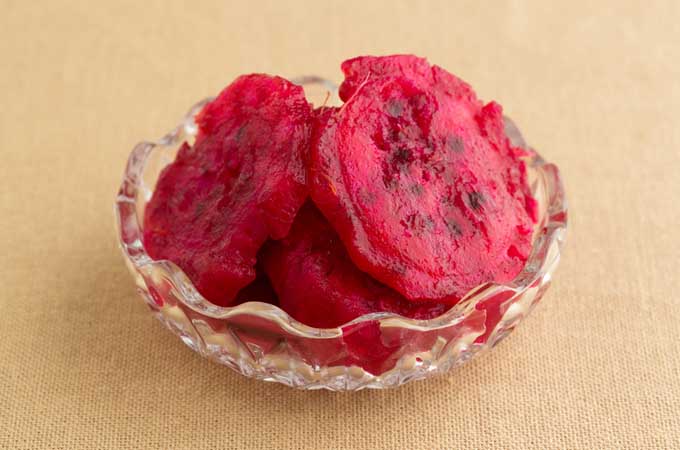
- The Desert Christmas Cactus yields berry-sized fruit that are crushed and made into a jam, as well as a beverage with an intoxicating effect.
- Velvet Mesquite provided a flour by grinding its seeds and pods into meal and baking it into cakes, while the sap was eaten like a candy. And the wood, used in cooking fires, lends a very distinctive layering of flavor.
- Pine nuts were also a favorite – the shelled nuts were ground to make cakes and a porridge-like gruel.
- Ground acorns were used for thickening stews.
The indigenous peoples of the Southwest also cultivated some crops such as corn, beans and squash. Wild game like rabbits, deer, antelope, wild turkey and quail were plentiful and used in many native recipes, and along streams and rivers, fish were also caught.
Interestingly, tomatoes grew wild in the Andes region of Peru, Bolivia and Ecuador and were cultivated in southern Mexico as early 500 B.C. But, they didn’t become popular as a food in America until after they had been introduced to Europe by Spanish conquistadors – although some Pueblo people believed that watching someone ingest tomato seeds would result in the gift of divination.
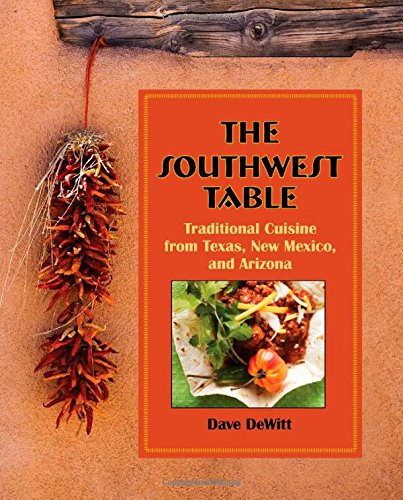
Foodal recommends the Southwest Table: Traditional Cuisine From Texas, New Mexico, And Arizona
The Mexican flavors contributing to this regional cooking style come from the legacy of the Aztecs, who were dining on beans, corn, chiles, avocados, onions and chocolate long before the arrival of Spanish expeditions in the New World.
The conquistadors brought their own regional ingredients and methods of cooking: sheep, goats and cattle were introduced to the area, as well as new cooking and preservation techniques such as salting pork, smoke-curing meats and sun-drying strips of jerky, which could be eaten as is or reconstituted by stewing.
The gastronomy of the Southwest was further refined by Mexican and Spanish settlers with the addition of flour from ground wheat, a particular variety of melons, bell peppers, summer squashes and zucchini, artichokes and tomatoes, as well as peaches and apricots.
European grape cultivars were also imported, as native species were highly acidic and sour, and considered unsuitable for wine making.
Any fruits that could be adequately stored over the winter months were highly regarded, and eventually these were used to create pastry fillings of dried fruits and nuts, primarily made with apples, raisins, apricots and almonds.
And the Spaniards also brought rice and cheese, still hugely popular in the Tex Mex and New Mex styles of cooking today.
Today, New Mexican cuisine is one of the favorite flavors of the American Southwest food culture, as is Arizona’s Sonoran style, a unique blend of flavors and dietary preferences.

The Basic Ingredients Used in Southwestern Cooking
Here’s a basic rundown on the ingredients you’ll commonly find used in this style of cooking.
Corn: Southwestern corn is grown in six colors, including red, white and blue. It has always been one of the primary crops cultivated by the American Indians.
In the dishes of today’s Southwestern style, corn is used in many different ways: corn husks are used to wrap tamales, the kernels are ground and pressed for oil, and they’re also dried and milled into flour. Mexican masa, or ground corn meal prepared with lime, was a dietary staple for centuries.
The tortilla today is pretty much as it has been for last several centuries, while posole – a thick soup made of lime-treated hominy corn with onions, garlic, cilantro and chilies – is enjoyed year round.
Beans: Beans were another dietary staple of the old Southwest, and they star in a number of dishes popular today in New Mexican cooking. The customary dish of black beans now has a distinctive flavor with the addition of mesquite-smoked chipotle chilies. It’s often served with avocado and a topping of crumbled cheese, then cooled with lime wedges.
Beans are used in tortillas and as a basic ingredient in soups, salsas, and a variety of entrees, as a dip, and of course, refried for a side dish.
Chilies: Southwestern cooking gets a big boost to its distinctive flavor from the Aztec influence, as it borrows heavily from Mexican cuisine with its generous use of spices, particularly the chili pepper.
Regardless of their color or heat level, which ranges from mild to inferno hot, whether smoked or raw, chilies are the spice of choice that captures the identity of Southwestern cooking.
This is notable in the green chili with its sweet and earthy flavor, and the fleshy red chili, hot and sweet – and, these chilies are often fire roasted to intensify their flavors even more. The most common type used today is the cayenne.
If you’re exploring Southwestern cooking for the first time, too much heat can happen. Learn how to turn down the heat on excessive spiciness here to bring out the full desert flavors of a truly balanced, authentic, and above-all edible dish!
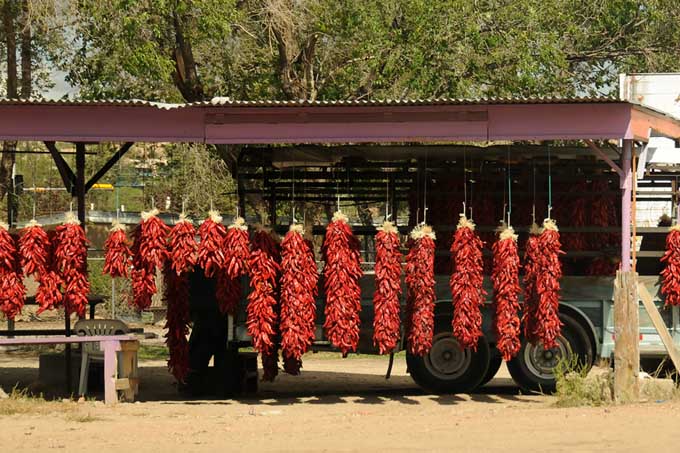
Not only do chili peppers add their distinctive flavor to cooking, along with tomatoes and tomatillos, they add a dramatic dash of color to Southwestern dishes. Another source of color in these dishes comes from mole sauce, the most well-known type of which is a chocolate-based sauce that’s reddish-brown in hue, and often served with grilled poultry, pork chops and beef tips.
A popular version in New Mex cooking includes red chili flakes, tomatoes, onion, cloves, sesame seeds, almonds, raisins, cinnamon, coriander and fresh cilantro. Sweet and savory, it’s a taste that can’t be missed.
Distinctive Cooking Techniques – Unique Fusion of Flame Roasting, Adobo, Cast Iron & BBQ
One of the traditional cooking techniques that remains with us today is the layering of flavors through roasting. Chilies and tomatoes are flame roasted to let the skin char, which results in a rich, smoky flavor, adding distinctive depth.
Another method is marinating foods in a paste or sauce such as adobo, which is a combination of chilies, vinegar, spices and herbs.
Cast iron skillet roasting is part of the cowboy heritage, a method employed by chuck wagon cooks. Garlic, skillet roasted over medium heat, creates a sweet, nutty flavor – a key ingredient in Southwestern barbecue glazes.
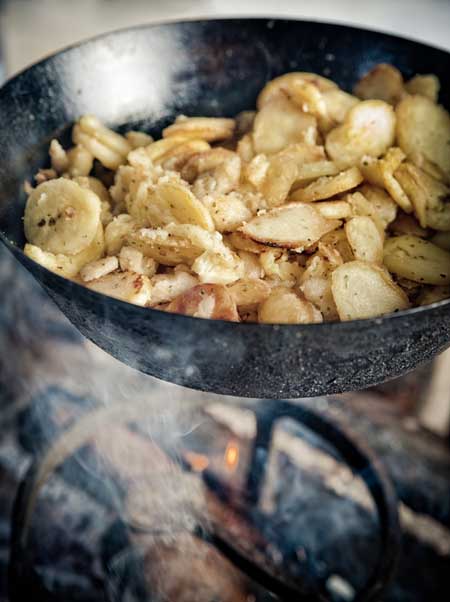
Cast iron grilling also lends its unique flavors to dishes such as skillet corn bread, where the ingredients are all combined and cooked with a little oil to intensify the heat and savory flavors.
Clay pottery used for baking and stewing is another heritage type of cookware, which allows for flavorful food prep without any metallic overtones.
And, of course, grilling or barbecuing is a standard method for cooking beef, pork and poultry, all infused with the spicy, sweet flavors of tomato-based glazes and sauces.
Today’s Flavors
Today, we can easily incorporate the roasted, smoked and spicy flavor ingredients so popular in Southwestern foods into our own everyday cuisine. A trip to your favorite grocer will supply the necessary ingredients for an adventurous exploration of this remarkable cooking style.
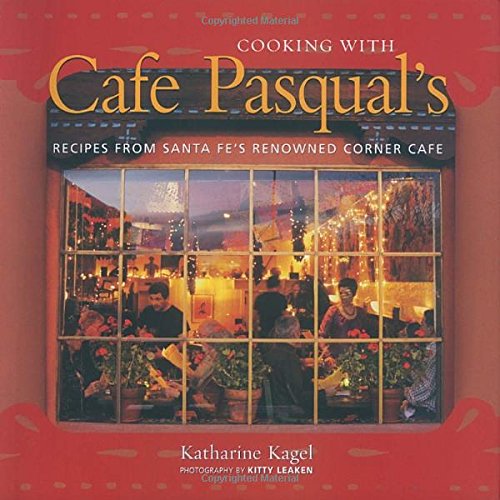
Check out this cookbook for a modern take on the Southwest style: Cooking with Cafe Pasqual’s: Recipes from Santa Fe’s Renowned Corner Cafe
Try the chipotle chili flavored bases, adobo sauces, roasted garlic pastes and mesquite flavored grilling chips to mimic many of the New Mex flavors. And if you need to temper the heat a little, just add a hint of molasses to smooth out the intensity.
Whip up some skillet cornbread biscuits, or create tortillas or tamales with fire roasted red and green chilies. Or create your own salsa fresca with tomatillos, tomatoes, chilies, garlic, onion, cilantro, and lime juice seasoned with salt and freshly ground black pepper.
Try out some of the big Southwestern flavors in new combinations, using it to flavor pasta, seafood or vegetable medleys. The results will create a new flavor sensation, further evolving the rich multicultural heritage and tastes of Southwestern cuisine.
A Couple of Southwest Inspired Recipes to Get You Started
Blazing Baby Back Ribs
This recipe was inspired by a trip to the Southwest many years ago, and created by my friend Kathy. A professional cook, she started her career working in logging camps cooking for hungry men who put in long days of intense physical labor. Legend has it that not even the bones remained after serving these ribs, they were that popular!
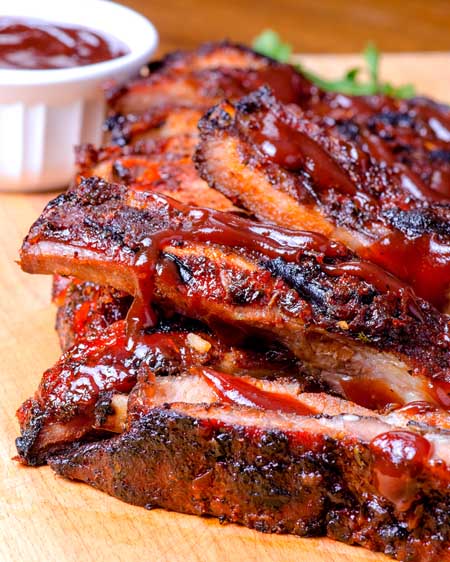
They are initially baked in a large roasting pan in the oven. This allows for a long and slow cooking time, to ensure that they end up tender and that you aren’t diluting the meaty flavors by parboiling (an awful, awful practice that should be banned under international law!).
After they’ve been tenderized, the ribs are grilled with a touch of direct heat on a barbecue grill, for some added smoky flavor and for a little caramelization of the sugars in the barbecue sauce. This allows the sauce to stick to the meat rather than dripping off. Be careful though – too much caramelization is the same thing as burning the sauce, and you don’t want that.
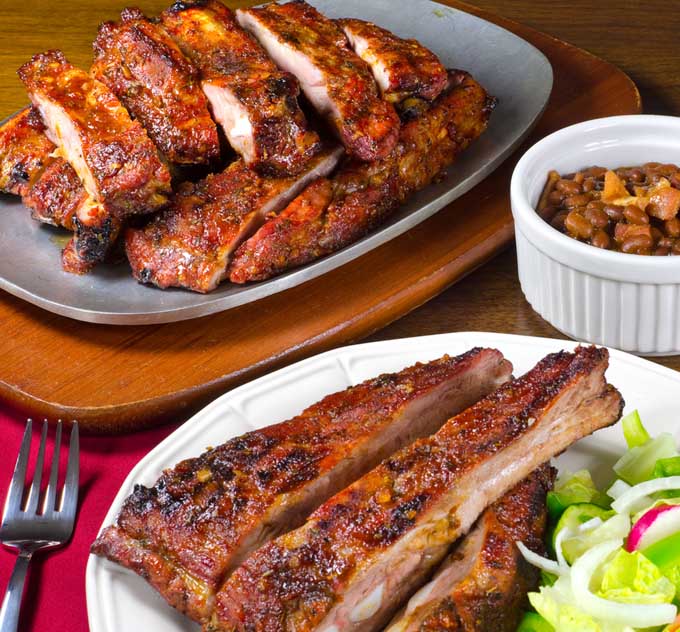
Also, don’t forget to read Foodal’s 5 Simple Steps to Great Tasting BBQ Ribs for some more great ideas.
- 2 racks of baby back ribs approximately 4 pounds
- 1 tablespoon dry mustard
- 1 teaspoon smoked paprika
- 1 tablespoon regular paprika
- 1 teaspoon fresh ground black pepper
- 1 teaspoon garlic salt
- 1/2 teaspoon chili flakes
- garlic salt to taste
- black pepper to taste
- 1 tablespoon canola oil
- 2 tablespoons finely chopped onion
- 1 tablespoon fresh parsley minced
- 1/2 teaspoon fresh oregano minced
- 1/2 teaspoon fresh savory minced
- 2 cups apple cider vinegar
- 1 1/2 cups tomato ketchup
- 3/4 cup lightly packed brown sugar
- 3 tablespoons Dijon mustard
- 1 tablespoon Worcestershire sauce
- 2 teaspoons chili powder
- 1 teaspoon cayenne pepper
- 1/2 teaspoon sea salt
- 1/2 teaspoon fresh ground black pepper
- Preheat the oven to 350 degrees F.
- Generously rub the ribs on each side with the dry rub seasonings.
- In a large roasting pan, place the ribs in a single layer and cover snugly with heavy-weight tin foil.
- Bake until the ribs are tender, approximately 1 ¼ hours.
- Preheat the barbeque grill to medium.
- Lay the ribs on the grill and season with a generous sprinkling of the BBQ spices - garlic salt and black pepper. Grill for about 10 minutes on each side.
- After each side has been grilled, add another layer of garlic salt and black pepper and brush with Spicy BBQ Sauce. Grill for about 5 minutes, turn over and repeat on each side. Repeat this step twice more, for a total of 15 minutes on each side with BBQ sauce. Adding the sauce too early, or leaving the ribs exposed to the heat for too long will cause them to burn because of the sugar base in the sauce.
- Turn off the heat, close the lid and let the ribs sit for 5 minutes before serving.
- In a medium saucepan, heat the oil over medium high heat.
- Add the onions and sauté until softened.
- Add the vinegar, ketchup, brown sugar, mustard, Worcestershire sauce, chili powder, cayenne pepper, salt and black pepper and simmer on medium-low heat for about 25 minutes.
- Add the parsley, oregano and savory and continue simmering another 10 minutes or so, until thickened.
- After cooking, store in the fridge in a tightly sealed glass jar for up to 3 weeks.
*Freshly ground Pepper tastes a whole letter better and is much more pungent than the pre-ground canned variety.

Mango and Black Bean Quesadillas
One of the great features of New Mex cooking is its “lightness” – all meals are not meat based, and the highly popular beans make a superb protein source.
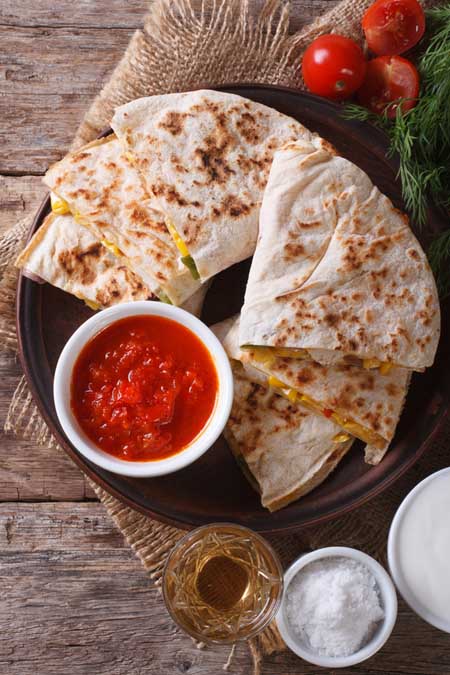
These quesadillas have a slightly sweet flavor from the mango, which pairs very nicely with the mildly spicy poblanos and other savory ingredients.
- 1 teaspoon olive oil
- 1 1/2 cups thinly sliced sweet onion
- 1 poblano chili seeded and diced *
- 1/2 avocado peeled and diced
- 1 cup Mango peeled and diced
- 1 can black beans rinsed and drained well
- 1/3 cup sharp cheddar cheese shredded
- 1/3 cup Monterey Jack cheese shredded
- 1 tablespoon fresh oregano minced
- 1/4 teaspoon sea salt
- 1/8 teaspoon fresh ground black pepper
- 4 whole grain 8” tortillas
- Cooking spray
- Preheat broiler.
- In a large, heavy skillet heat the oil over medium-high heat. Add the onion, poblano, oregano, salt and pepper and sauté 5 minutes or until the onion is tender. Add the beans and cook for another minute or 2 until well heated.
- Remove skillet from the heat and gently fold in the mango and avocado.
- Place the tortillas on a baking sheet coated with cooking spray. Arrange ¼ of the bean mixture on half of each tortilla, leaving a 1/2-inch border. Sprinkle 1 tablespoon of each cheese over the bean mixture and fold tortilla in half.
- Brush the top of the tortillas lightly with olive oil, then broil approximately 3 minutes or just until the cheese melts.
- Cut each quesadilla into thirds or quarters and serve with sour cream, salsa, hot sauce and/or guacamole.
*Poblano chilies are very mild, so if you can’t find them at your grocers substitute 1 green bell pepper and ¼ teaspoon chili powder. Add the chili powder in step 1.
Serve with:
- 4 heaping tablespoons sour cream.
- 4 heaping tablespoons salsa.
- A side dish of guacamole.
- Your favorite hot sauce.
For a lighter version, use low fat cheese and sour cream, or substitute Greek yogurt for the sour cream.

About Lorna Kring
Recently retired as a costume specialist in the TV and film industry, Lorna now enjoys blogging on contemporary lifestyle themes. A bit daft about the garden, she’s particularly obsessed with organic tomatoes and herbs, and delights in breaking bread with family and friends.

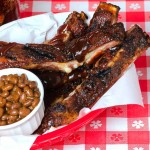




I grow my own cayenne chillies on the windowsill at home and they have given me great yields for many years now. The recipe for the baby back ribs looks fantastic. I often have problems when it comes to cooking ribs so a recipe from a trusted source like Foodal is always welcomed. I’ll let you know how I get on with them!
Oh, I know what will be growing on my windowsill soon… do let us know how the ribs turn out, it’s a recipe that’s worth the bit of extra time when they’re on the grill.
Really interesting to read about the vegetation used as ingredients. I’ve had prickly pear cactus in an omelette and it was delicious. Would like to try that again!
The quesadilla recipe looks great. I love mango on its own but I rarely use it in my cooking. I can see how that and the avocado would set off the poblano really well, though.
The prickly pear is tasty, it’s just getting to the good part that’s the problem… those spines are sharp! And you’re right, the mango really adds some nice ‘up tones’ to the quesadilla.
Many of those native desert foods, I have never even heard of. I do know that that native and wild plants are good nutrition and suited to the people of the climate. I eat native plants here at home too. I have also enjoyed skillet corn bread, and never knew IRS origin, which is interesting, the how’s and why’s of its concep tion. The recipes are great, and I especially like the special bread wraps that are used in this cuisine. I make a skillet bread with flour, but it pales in comparison to the breads I see for burittos and quesadillas.
Well, we just made a trip to the Southwest, and I took notes on the native foods at some of the heritage sites we went too – I enjoy wild edibles, and it was pretty interesting what was available to the locals.
My husband is going to bug me all the time if he finds out I have access to some of these recipes. Lol him and the kids love it! I think for I’m going to start with the quesidilla. It is what looked the most interesting.
Enjoy your quesadilla, and let us know how it turns out for you. And what the family thinks!
I have to admit you hit the nail right on the head concerning what ingredients are basically, in one form or another, in most Southwestern cooking. I think a lot of Southwestern cooking take a certain level of heat. I suppose that’s what I get for eating popular southwest mixes in the general grocer. It’s always a mild heat. Like a neutered chipotle.
I think there is an element of heat in Southwest cooking, but easy enough to adjust to suit personal tastes.
This article appears to be more like a history of Southwestern cooking. It is real interesting to see the way cooking has evolved over time and what the final results are.
Many of these foods are enjoyed worldwide and their ingredients remind me of some used in the Indian (Eastern) and Italian Cooking. This article and recipes is full of mouthwatering information and ideas that can only be a welcome addition to my future cooking endeavors.
Thanks for reading oraclemay, and for your comments. What I find really interesting about the history of regional cooking techniques and flavors is the common thread that runs through other techniques and flavors… it’s a nice connection to have. Glad you enjoyed the post.
I live about as far southwest in the United States as you can…San Diego. Of course, we don’t have Southwestern Cuisine here because it has different Spanish, Mexican, and other influences. I love the recipes on this page, though, and I am a big fan of Southwestern cooking.
Thanks for your comments troutski, hope you enjoy the recipes…
Very interesting read! I didn’t know southwest had such a rich history. My BBQ is typically store bought stuff with no real flavor other than sweetness. I think I am going to take some of these flavors and create my own southwest sauces and give it a try!
Sounds great jony, your own signature sauce just in time for BBQ season!
Wow, I never knew the natives ate cactuses. I’ve never tried one myself, though I’d love to because it sounds very exotic from what I’m used to. Great recipes included too! Would love to try to baby back ribs but I’ll have to pass on the mango black bean quesadilla. I’m one of those unfortunates who are allergic to mango. Mangoes are a tasty fruit but if your allergic to the chemicals it produces, you’ll have rampant skin reactions like I did. But all in all, very informative article on southwestern foods with great recipes!
Glad you found the post informative, and hope you enjoy the ribs! Too bad about the mango…
Wow, those quesadillas look absolutely ridiculous. I’ll have to give them a try.
I just recently ordered a bunch of chili seeds from Texas to grow in my home garden! It’s a variety pack, so I’ll get your regular garden variety chilies, as well as some more exotic ones, like ghost chili peppers. I’m excited to be able to try out new flavor combinations in my meals. Where I live, the climate isn’t exactly ideal to be growing spices or vegetables that have that southwestern vibe to them.
Mmmm, homegrown chilies, exotic indeed! You’ll be cooking with heat by summer’s end Bozusaki… and make sure to save the seeds of your favorites for next year’s garden!
First of all, I haven’t even finished my morning coffee yet and I’m already looking forward to lunch. This is a well-written, informative piece on one of my favorite food cultures, and I’ve got to say, I am hungry. I’m a heat guy, but I understand the subtle uses of chilies and other spices in regards to adding heat without overpowering food. This is a culture and cuisine that uses a myriad of ingredients to develop layers of flavor that includes but doesn’t limit itself to hot stuff. The photographs used in this article are mouth watering and the recipes you offered, particularly for the Blazing Baby Backs, are spot on. I think I know what dinner will be tonight.
You’re so right carlhose, the flavors of the southwest have lovely, textured layers and the heat is only one component. An important one, to be sure, but as you say to be used with subtlety and skill.
I don’t know why I keep coming back to this website. Every single time I read one of your articles, I ALWAYS become hungry in the middle of reading them. Mouthwatering delights all with pictures in high definition – this is pure torture, I tell you! Anyway, I’d like to focus on the spicy delicacies that the south offers. Oddly enough, most of the south have a fascination on extremely hot sauces, food that will burn through your digestive tract in an instant. Why do they love it though? I think it is because of their culture. They are hardy folk that can face whatever the world gives them – ridiculously spicy herbs included. It takes courage to eat them, as they are not for the weak. It is an acquired taste, but when you get used to it, the mere mention of these sizzling hot delicacies will make your mouth water instantly.
The intensity of the heat in some dishes certainly isn’t for the faint of heart OITF! But oh so tasty… and quite addictive too!
You just mentioned a lot of common Mexican meals/fruits. For example, the fruit of prickly pear cactus, on summer I think, it’s when they are more mature and it’s one of the nicest fruits to eat during this time, it’s such a nice and refreshing fruit, and it also with some powder chili on it, can be eaten as a snack, yum!
It’s interesting to see how many things have to happen for us to have this “food culture”, at the end of the day, it’s just an interaction of cultures and a smart mix of flavors. This was a really interesting read.
The prickly pear is quite refreshing, ‘tho I’ve never tried it with chili powder… sounds delish! Glad you found the read to be of interest!